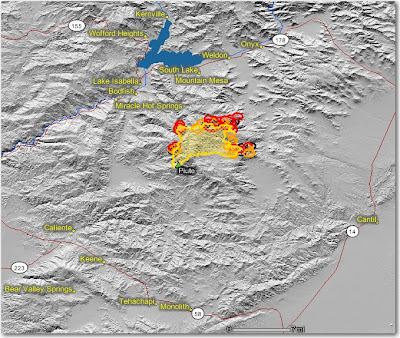Another reminder–
Today, July 6 is the 14th anniversary of the South Canyon fire near Grand Junction, CO.
From the IAWF Wildland Fire Event Calendar:
On the afternoon of July 6, 1994, the South Canyon fire near Grand Junction, CO spotted across the drainage and beneath firefighters, moving onto steep slopes and into dense, highly flammable Gambel oak. Within seconds, a wall of flame raced up the hill toward the firefighters on the west flank fireline.
Failing to outrun the flames, 12 firefighters perished. Two helitack crew members on top of the ridge also died when they tried to outrun the fire to the northwest. The remaining 35 firefighters survived by escaping out the east drainage or by seeking a safety area and deploying their fire shelters.

For more information, the Lessons Learned Center has the investigation report. It is a large file, about 4 MB.




